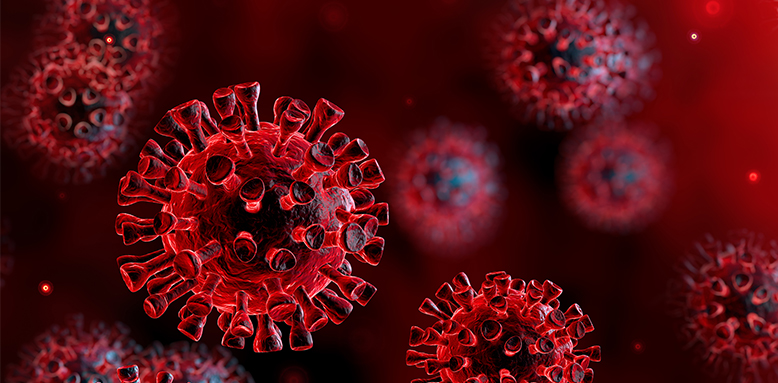
The world is witnessing the ongoing outbreak of a new coronavirus that began in the city of Wuhan in China in late December of 2019. This new coronavirus, 2019-nCoV, was first isolated from three patients in Wuhan who suffered severe respiratory illness. The virus has already spread from Wuhan to other major cities and provinces in China, and to other countries as well. As a result, on January 30, the World Health Organization declared the Public Health Emergency of International Concern over this global outbreak.
Coronaviruses are not new to us. We all remember SARS (Severe Acute Respiratory Syndrome) and MERS (Middle East Respiratory Syndrome). The SARS coronavirus (SARS-CoV) epidemic spread to 27 countries between November 2002 and July 2003, infecting 8096 people and leading to 774 deaths. A decade later, in 2012, the MERS-CoV emerged to cause 2494 cases of disease, of whom 858 died. Now, nearly two decades after SARS, this new 2019-CoV has broken into the human population to cause yet another coronavirus epidemic.
The number of 2019-nCoV cases has been rapidly climbing. As of February 2, 2020, 17384 confirmed cases were reported and 362 people have died. Canada has 4 confirmed cases, three in Ontario and one in British Columbia. It has been confirmed that human to human transmission of 2019-nCoV underpins this escalating epidemic. The Chinese government has implemented strict measures to contain and control this coronavirus outbreak. So far, only sporadic cases have been reported in countries other than China.
Coronaviruses have long been known to cause the common cold in humans, with only mild symptoms. But, these new coronaviruses, SARS-CoV, MERS-CoV and 2019-nCoV, are highly pathogenic. This is, in part, because they are the result of zoonotic transmission of animal coronaviruses, with bat coronaviruses likely as the primary reservoirs. The immediate intermediate animal hosts that directly transmitted these coronaviruses to humans may vary, with the one for 2019-nCoV yet to be identified. As a result, humans lack both individual and herd immunity. Even worse, these new coronaviruses can infect the lower respiratory tract, and cause severe pulmonary symptoms and even death.
Unfortunately, there is not yet any approved treatment or vaccine available for SARS-CoV, MERS-CoV, or 2019-nCoV. Accordingly, prevention, timely diagnosis, and quarantining are critical to curb the transmission and spread of 2019-nCoV. As an airborne pathogen infecting the respiratory system, 2019-nCov is transmitted through direct contact and droplets. Mask wearing and hand washing are thus likely sufficient to prevent acquiring this virus. Based on the current statistics, most of those who died of 2019-nCoV infection are elderly patients with pre-existing medical conditions. While caution needs to be exercised, it is also important to avoid excessive fear that could lead to panic and overwhelm the healthcare system.
We need to be prepared. The government and health agencies must be alert to any new developments in the 2019-nCoV epidemic. Hospitals and clinics need to have the quick and accurate diagnostic tools ready and testing capacities reserved in the event of potential 2019-nCov outbreak in Montreal and other cities of Canada. More research is required to better understand this new coronavirus including, where it came from, how it transmits, how it causes illness, and how to prevent and treat 2019-nCoV infection.
In response to this escalating 2019-nCoV epidemic, the McGill Interdisciplinary Initiative in Infection and Immunity (MI4) has launched a call for research to tackle this new coronavirus. The more we know about 2019-nCoV, the more effective measures we can identify and develop to prevent its transmission, to treat the infected patients, to control this ongoing epidemic.
It is currently uncertain how the 2019-nCoV epidemic will develop in the coming days, and how much damage it will do to our society at different levels. But it is certain that the control of this epidemic will require the combined efforts of the government, healthcare professionals, researchers, industries, and the public. The 2019-nCov is not the first animal coronavirus that wandered into the human population, and surely it will not be the last one either. Let’s learn from the past, and be better prepared for the future.
Chen Liang, PhD
Professor, Departments of Medicine, Microbiology & Immunology, McGill University
Researcher, Lady Davis Institute, Jewish General Hospital
The McGill Interdisciplinary Initiative in Infection and Immunity
Don Sheppard MD, FRCP(C)
Director, McGill Interdisciplinary Initiative in Infection and Immunity
Professor and Chair, Department of Microbiology & Immunology
February 6, 2020
